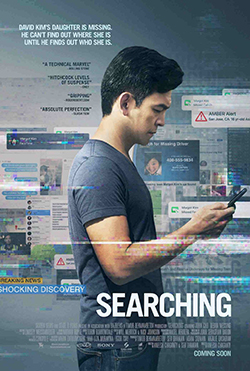‘Searching’ uses a new technique to deliver an enthralling mystery
Posted on September 7, 2018
Although “The Blair Witch Project” was not the first to use the “found footage” technique, it definitely popularized it, and that film’s success led to countless other examples of the filmmaking style (most of them pretty bad). Just about any technique or style can be reduced to nothing more than a gimmick if it’s being used simply for the sake of it and not for a genuine need of the story.
That was the case with “The Blair Witch Project,” in which much of the tension and horror arises from the fact that the footage being shown is alleged to have been shot by the characters themselves, who left the film behind. Other great examples include: “Chronicle,” the original “Paranormal Activity” and “Phoenix Forgotten.”
A much newer technique is making a film look as if all of the action takes place on a computer screen, popularized — or perhaps even invented — by the horror film “Unfriended” and its sequel, “Unfriended: Dark Web.” Admittedly, I haven’t seen either film, but by most accounts, the sequel outshines the original.
I chose to skip “Dark Web” because I was already anticipating the release of “Searching,” which takes the technique away from the horror genre and implants it into a mystery thriller. The film is the feature debut of director and co-writer Annesh Chaganty, who uses the technique to tell an interesting, tense tale of a father searching for his missing daughter and coming to the horrifying realization that he did not really know her.
Subscribe to our e-Edition and read the rest of the story. Already a subscriber? Click here to sign in.

Recent Comments